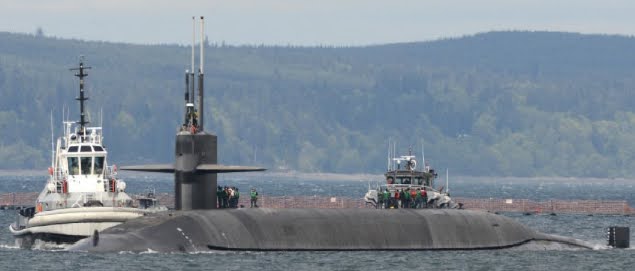Aircraft carriers, ships and missiles in the US Navy
Bayanalysis - Nuclear aircraft carriers (CVNs) provide a forward presence to project air power. The US Army budget continues to provide additional funding for GERALD R. FORD class nuclear aircraft carriers: ENTERPRISE (CVN 80) and DORIS MILLER (CVN 81).
Amphibious warships, along with their conductive boat, are versatile and interoperable platforms of warfare, and are key enablers of power projection by navies in the theater of operations.
The US Army's budget request continues to fund the first LPD 17 SAN ANTONIO Class Flight II and funds the Landing Craft Air Cushion (LCAC) 101 Landing Craft Air Cushion (LCAC) Life Extension Program (SLEP) and recapitalization of the Landing Craft Air Cushion (LCU) 1700 to support the amphibious assault capability.
Surface combatant ships are multi-mission warships designed and engineered to carry out sea control and power projection missions.
The US Army budget continues to purchase the DDG 51 Flight III variant, which, with the addition of the AN/SPY-6(V) Air and Missile Defense Radar (AMDR), provides improved sensitivity for long-range detection and advanced engagement. Air, surface and ballistic missile threats.
The US Army's budget request also supports the purchase of the new CONSTELLATION-class frigate to meet the Navy's small surface combatant requirements for a more lethal and capable pursuit of the littoral combat ship.
The US Army's budget request continues to diversify and expand the Navy's strike capability by continuing funding for armed unmanned surface vessels (USVs) and providing funding for two additional tow, salvage and salvage vessels to continue to recapitalize these critical assets.
The Navy's submarines provide unprecedented attack and special operations capabilities from a covert, covert platform.
Armed with tactical missiles, the four OHIO-class guided missile submarines carry up to 154 Tomahawk land attack cruise missiles (TLAMs) and have the capacity to host up to 66 Special Operations Forces (SOF) personnel; However, they started decommissioning as of 2027 at a rate of 1 per year.
Following the fiscal year 2021 award for the first Columbia-class ballistic missile submarine, which is slated to replace the aging OHIO-class submarine, the US Army's budget request continues critical research and development and other major funding for the program.
The US Army budget request also continues to develop a VIRGINIA Payload Module (VPM) on Block V VIRGINIA Class (VCS) submarines, which will replace much of this critical capability by adding an additional 28 TLAMs and space for SOF operations on top of Block I-IV VCS. The Navy awarded a construction contract for a second Virginia-class attack submarine this fiscal year in March 2021.
The US Army budget request also funds programs that implement survivability improvements to US naval defense capabilities, which consist of the Surface Electronic Warfare Improvement Program (SEWIP) Block 3 (for countering advanced threats) cyber-attack capability and the Off-board Advanced Electronic Warfare Program, consisting of long external booby traps Term to address identified electronic warfare vulnerabilities.
The US Army budget continues to fund 125 Standard 6 Missiles (SM-6), providing the most capable, long-range anti-aircraft missile for fleet defense.












No comments: